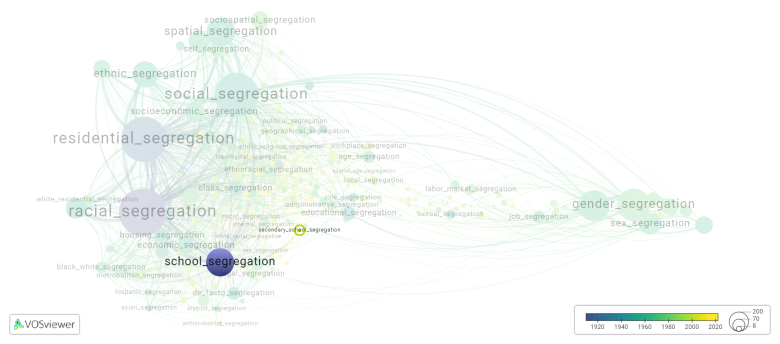Secondary school segregation: Difference between revisions
(Creating page) |
(Creating page) |
||
| Line 8: | Line 8: | ||
This segregation can have detrimental effects on students, leading to disparities in educational outcomes, opportunities, and resources. It can also perpetuate existing inequalities and reinforce stereotypes and biases. Efforts to promote integration and diversity in secondary schools are essential in addressing these issues and ensuring equitable education for all students. | This segregation can have detrimental effects on students, leading to disparities in educational outcomes, opportunities, and resources. It can also perpetuate existing inequalities and reinforce stereotypes and biases. Efforts to promote integration and diversity in secondary schools are essential in addressing these issues and ensuring equitable education for all students. | ||
==See also== | ==See also== | ||
==Related segregation forms== | |||
Secondary school segregation is frequently discussed in the literature with the following segregation forms: | |||
[[school segregation]], [[hispanic black segregation]] | |||
[[File:secondary_school_segregation.png|780x780px]] | |||
For the complete network of associated segregation forms, see: | |||
year of publication https://tinyurl.com/2235lkhw | |||
Louvain clusters https://tinyurl.com/2d8wg5n3 | |||
betweenness centrality https://tinyurl.com/223udk5r | |||
disciplines where segregation forms first appeared https://tinyurl.com/244d8unz | |||
==References== | ==References== | ||
==Notes== | ==Notes== | ||
Revision as of 14:38, 27 September 2024
Date and country of first publication[1]
2010
United Kingdom
Definition
Secondary school segregation refers to the practice of separating students based on race, ethnicity, socio-economic status, or other characteristics in secondary schools. This segregation can manifest through tracking or streaming students into different academic programs or classes, creating separate schools for certain groups of students, or providing unequal resources and opportunities to different student populations.
This segregation can have detrimental effects on students, leading to disparities in educational outcomes, opportunities, and resources. It can also perpetuate existing inequalities and reinforce stereotypes and biases. Efforts to promote integration and diversity in secondary schools are essential in addressing these issues and ensuring equitable education for all students.
See also
Related segregation forms
Secondary school segregation is frequently discussed in the literature with the following segregation forms:
school segregation, hispanic black segregation

For the complete network of associated segregation forms, see:
year of publication https://tinyurl.com/2235lkhw
Louvain clusters https://tinyurl.com/2d8wg5n3
betweenness centrality https://tinyurl.com/223udk5r
disciplines where segregation forms first appeared https://tinyurl.com/244d8unz
References
Notes
- ↑ Date and country of first publication as informed by the Scopus database (December 2023).
At its current state, this definition has been generated by a Large Language Model (LLM) so far without review by an independent researcher or a member of the curating team of segregation experts that keep the Segregation Wiki online. While we strive for accuracy, we cannot guarantee its reliability, completeness and timeliness. Please use this content with caution and verify information as needed. Also, feel free to improve on the definition as you see fit, including the use of references and other informational resources. We value your input in enhancing the quality and accuracy of the definitions of segregation forms collectively offered in the Segregation Wiki ©.
Secondary school segregation appears in the following literature
Cheng S.C., Gorard S. (201). Segregation by poverty in secondary schools in England 2006 2009: A research note. Journal of Education Policy, 25(3), 415-418. https://doi.org/10.1080/02680931003699542
Fiel J. (2015). Closing ranks: Closure, status competition, and school segregation. American Journal of Sociology, 121(1), 126-170. University of Chicago Press.https://doi.org/10.1086/682027
Lam B.O.-Y., Byun S.-Y., Lee M. (2019). Understanding educational inequality in Hong Kong: secondary school segregation in changing institutional contexts. British Journal of Sociology of Education, 40(8), 1170-1187. Routledge.https://doi.org/10.1080/01425692.2019.1642736
